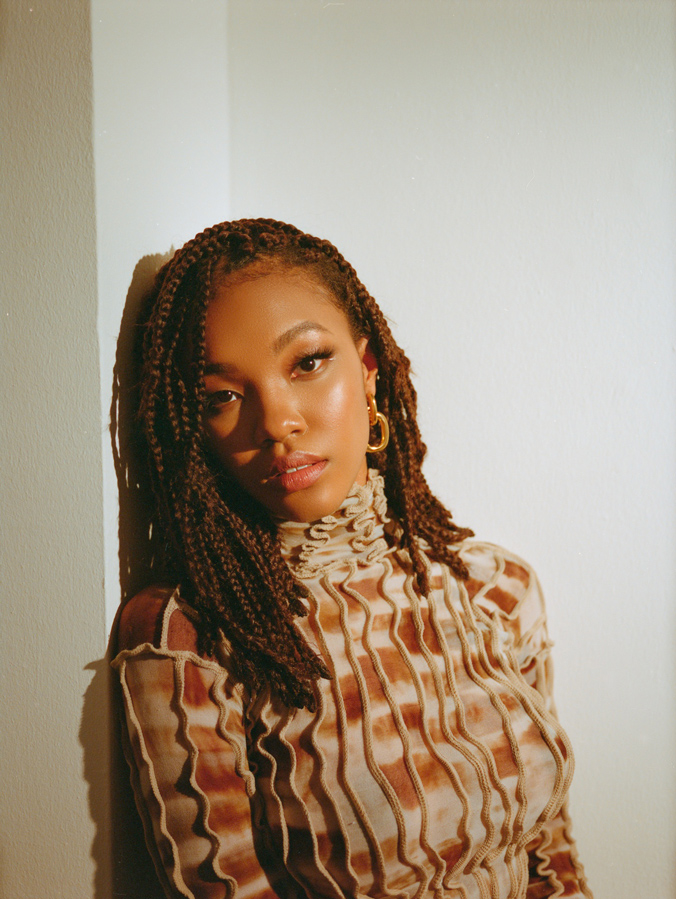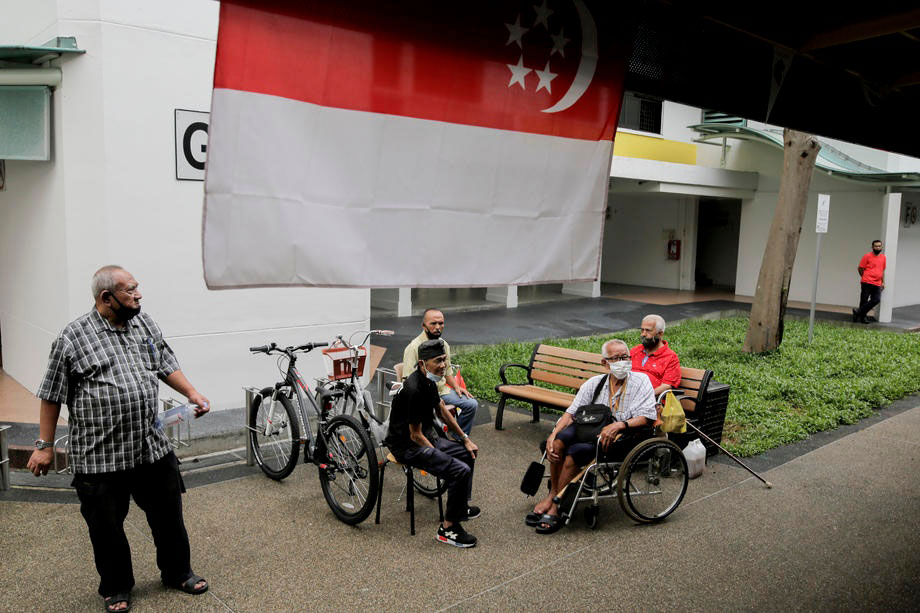What does a ‘Singaporean’ look like?
In a nation known for its tolerance and diversity, Singapore is often lauded for being the poster child of multiculturalism amidst a region where ethnicity is frequently a divisive social factor. The tagline “regardless of race” is not only imbued in the country’s national pledge, but has also been marketed in official campaigns and endorsements which boast portraits of individuals from the four main racial groups – Chinese, Malay, Indian and “Others” (CMIO). This has been the commonly accepted categorisation of Singaporeans.
But where do African-Singaporeans fit into this neatly curated picture? This is a question that 17-year-old singer, model and dancer Melanie Kasise, more commonly known by her stage name Keyana, has had to grapple with. As an entertainer, Keyana wields an impressive career in spite of her age, with magazine covers in the likes of Vogue Singapore and the release of her second single SCORPIO in November this year to prove it.
But despite her illustrious métier, growing up mixed-race in Singapore brought certain challenges for Keyana, who identifies as half-Chinese and half-Ghanaian.
“I got bullied a lot as a child in school. My hair and skin colour got made fun of [because] I looked very different,” Keyana told the Globe. “I live with the Chinese side of my family in Singapore, but I also look very different from them, so there isn’t really a place where I really fit in.”
There have also been times when strangers have made assumptions about Keyana based solely on her appearance, even though she is, in fact, completely in tune with Chinese culture given her upbringing.
“I grew up with the Chinese culture, but I never looked the part,” Keyana said. “On public transportation, I once heard someone behind me talking about me in Chinese expecting me not to understand. She said that Black people don’t belong in Singapore, that my hair is smelly, and that I should leave. Because of this, I’ve always been very conscious about how I look, and never really felt like I fit in in Singapore.”

Keyana’s experience as an individual who has been fully immersed in her Chinese culture, but whose looks do not fit the conventional mould of what is expected of a “Chinese Singaporean”, challenges common assumptions of what it means to be Singaporean.
In the past decade, Singapore has seen a rise in diversity, particularly amongst the “Others” category within its prominent CMIO model, which underpins various national policies including education, public housing, and electoral divisions. However, a rising number of citizens have begun questioning the pertinence of the CMIO model amidst increasing diversity.
For instance, a report on Marriages and Divorces 2017 released by the Department of Statistics revealed an increase in inter-ethnic marriages from 8.9% in 1997 to 22.1% in 2017. Those who believe the CMIO model to be outdated have cited this statistic as a reflection of the growing social heterogeneity in Singapore, which the current ethnic classification framework fails to capture sufficiently.
However, those in favour of the CMIO model have emphasised that Singaporeans still value the importance of race – as attested by the 60% of respondents who indicated that race is important to them in a 2017 survey conducted by the Institute of Policy Studies (IPS) and Channel NewsAsia (CNA) – which heralds the necessity for race-based policies to ensure that ethnic quotas and integration are achieved.
For individuals from the African-Singaporean community, this issue is further complicated by a reduced acceptance from society. In the same survey by the IPS and CNA, it was found that new citizens from African backgrounds were less likely to be accepted as “truly Singaporean” (61.7%) compared to their Malay (96.9%), Chinese (96.0%), Indian (91.2%) or Eurasian (83.7%) counterparts. This could perhaps be explained by a general lack of representation of African-Singaporeans in mainstream conversations surrounding race, as well as a lack of interaction between African-Singaporeans and wider society.
“It’s uncommon to see people who are half African in Singapore, you don’t usually see them on the streets,” Keyana said. “Minorities in Singapore like the Malay and Indian communities do raise a lot of awareness [about issues surrounding minority-majority relations], but I don’t feel like any of these platforms really raise awareness for Afro-Singaporeans. I don’t see Singaporeans including or regarding Afro-Singaporeans as ‘Singaporeans’. If they do see an African person, [the comment that is made is] always, ‘Where are you from?’”
We haven’t established an African culture in Singapore, which also means that older Singaporeans are less likely to have seen an African person. Meeting and interacting with African people just isn’t common
African-Singaporeans have tended to be pushed to the sidelines rather than embraced as a “natural” part of Singaporean society, which is an observation that Keyana has also noticed.
“I think the reason for this is that there aren’t many Afro-Singaporeans in Singapore, and most of us [from this community] either come from a different country, or are mixed and grew up here. We haven’t established a deep-rooted African culture in Singapore, which also means that older Singaporeans are less likely to have seen an African person. Meeting and interacting with African people just isn’t common enough,” Keyana said.
Indeed, the African community has remained relatively unseen by Singaporeans – but that doesn’t mean it isn’t there. Lawrence Linker, who in 2013 founded a networking organisation for Black professionals in Singapore called BlackNet, pointed out that there are many more Africans and Black people living in the city-state than most might think. The group regularly hosts events to raise the profile and connect African-Singaporeans, however, Linker also acknowledged that his interactions with this demographic has been limited.
“I don’t know a lot of African-Singaporeans,” Linker said. “We recently hosted a panel discussion with three African-Singaporean siblings and I believe they are getting in touch with more. So hopefully this will be something we’ll see more of in the future.”
This reduced visibility of African-Singaporeans also translates to the media industry, where the involvement of darker-skinned individuals tends to be an anomaly. In fact, this has also made Keyana feel like an outcast at certain points in her modelling career.
“As a model, I have never felt like I was going to be a model for the rest of my life … because I don’t fit in,” Keyana said. “Four years ago, when I was casting for the cover of a magazine, someone told me that they could not have a Black girl be the only person on the cover. They had to have someone else with the Black person, or the magazine wouldn’t sell. But there are so many women who have dark skin colours, so why are [magazines] so uncomfortable with placing someone who is genuinely dark-skinned, and who understand the problems that come with looking this way, on their covers?”
These were the cards that Keyana was dealt with, and remarks like these had become so commonplace that she had become somewhat resigned to them. In fact, her experience has been echoed by other entertainers who identify as ethnic minorities in Singapore.

Stand-up comedian Sharul Channa has previously spoken about the challenges that she faced as an Indian minority woman in the performance industry, where she was often type-casted at the beginning of her career. A similar case commonly known to Singaporeans as the “Ah Boys To Men 4 Audition Saga” also highlighted issues concerning casual racism that had arisen during actor Shrey Bhargava’s movie audition, where he was asked to assume a “thick Indian accent” and play “a full-blown Indian man”.
While these instances of casual racism are still present, Keyana also acknowledged that the media and modelling landscapes have begun to become more accepting of the diversity that she has to offer. This was particularly following her decision to candidly share about her experiences as a person of African-Chinese descent online – in 2019, her Twitter posts urging Singaporeans not to use the N-word gained a considerable amount of traction and were shared widely on social media platforms.
“After I began sharing my story, the Editor-in-Chief of Vogue Singapore reached out and asked me to be Miss Vogue of the second edition of the magazine,” Keyana recounted. “I’m honestly really thankful to them because they represented me very well on that shoot, and I felt [authentically] ‘me’.”
Linker from BlackNet shared a similar positive outlook towards his community’s integration into Singapore. “I think many of the African or Black people you speak to in Singapore will describe integration here as a fairly positive experience,” he said. “While no place is perfect and there will always be incidents [of racism], I think Singapore is uniquely positioned to exercise tolerance along racial lines.”
In terms of her other plans moving forward, Keyana shared that while her love for R&B music remains strong. But she is also keen on exploring the music of her youth, Mandarin music, and changing perceptions of what a Chinese woman can look like in the process.
“Mandopop is such a big part of my culture, and I’m definitely going to be putting up something [in that realm] soon,” Keyana revealed. “I love Mandarin, and the idioms used in the language have so many smart word plays. But the way they are incorporated into Mandopop is also always very classy.”


